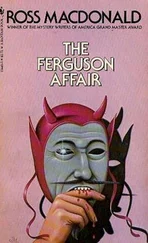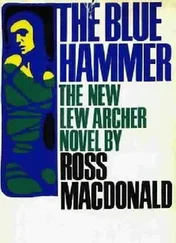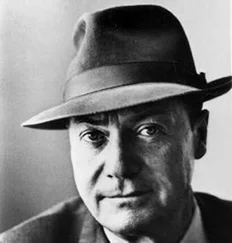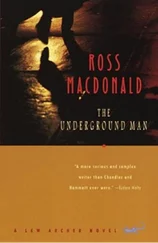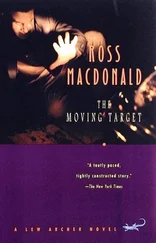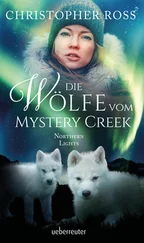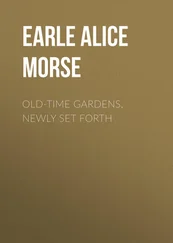Warners visits aside, Millar spent most of his three-week leave at the Chapman Park Hotel (where Margaret had moved from the Roosevelt), "writing laboriously and unenthusiastically on my still-to-be-stillborn thriller," as he reported to their Michigan mystery-writer friend H.C. Branson, "while Margaret went to the office to earn unimaginable sums…" Millar was sincerely pleased with his wife's success, but he was keenly aware of the new disparity between their salaries. The earnings gap made him uneasy, as did the great professional distance his wife had put between them. Millar needed some way to catch up, however modestly.
One possibility presenting itself was to enter a short story contest being sponsored this year by Ellery Queen's Mystery Magazine, a competition soliciting entries from the country's top detective and crime writers (including William Faulkner).
Launched in 1941 (the one-hundredth anniversary of the first mystery story, Poe's "The Murders in the Rue Morgue") by Frederic Dannay, who with his cousin Manfred B. Lee had written popular detective fiction since 1929 as Ellery Queen, the digest-sized EQMM had done much to revive and sustain the mystery short story. Now Queen was doing even more, with a competition offering thousands of dollars in prize money. Both Millars talked of entering the well-publicized contest.
The challenge was on Ken Millar's mind the last days of his leave, as he and Margaret returned with their daughter and her nanny to Santa Barbara and Ken saw for the first time the home his wife had made for them at 2124 Bath. (He'd work the house and its address into a scene in The Long Ride .) When leave ended, he returned to San Diego for two weeks (accompanied by his family), then shipped out on September 26.
The Shipley Bay had been converted to a troop transport, to pick up servicemen from posts far and near and ferry them back to the States. On Millar's second night aboard, his fertile subconscious concocted a surreal mystery plot which he sardonically described to Margaret: "I dreamed a queer dream: a complete murder story, or so it seemed, with suspects, atmosphere, detection, and surprises. The corpse was a woman at first and towards the end a man, all without explanation. Also without explanation, it was the corpse who turned out to be the murderer. So it looks as if I won't be able to use the plot for the Ellery Queen contest, unless their standards become surprisingly elastic."
If his dream wouldn't do for Ellery Queen's Mystery Magazine, it would certainly have intrigued Karen Horney, the psychoanalyst whose book Millar was reading and liking this week (and which may have fed his fertile subconscious). "Reading a book like that," Millar wrote his wife, "is seeing myself in practically every case-history… every neurotic type… You, of course, are the other person I'm always looking for…" He didn't think either of them were actual neurotics, Millar assured Margaret. "Still, I intend to be analyzed after the war… I'm interested and should learn from the experience, I hope not too much." In the meantime, Millar told Margaret, "I don't after all have a copy of [the EQMM ] contest-rules and I'm still interested, so if you have 'em send 'em along or better bring them to Frisco…"
Margaret did that when she met Millar again in San Francisco on October 9 for four days. Neither of them had yet decided to enter the Ellery Queen contest; but the final night of Millar's stay, Kenneth and Margaret met someone who persuaded them they should: William A.P. White, a writer best known by his pen name of Anthony Boucher.
The 34-year-old Boucher, equally involved with mystery fiction and science fiction, wore many hats: novelist, short-story writer, translator (notably, later, of Jorge Luis Borges's first tale published in English), eventual magazine and book editor, radio scriptwriter ( The New Adventures of Sherlock Holmes, The Adventures of Ellery Queen, though the latter was a well-kept secret), and — most importantly for the Millars — critic. Boucher covered crime fiction in the San Francisco Chronicle; in a few years, he'd become mystery reviewer for the New York Times . A charter member of the newly-formed Mystery Writers of America, Anthony Boucher was well on his way to being the most influential detective-fiction critic in the country; and he was a fan of both Margaret and Kenneth Millar's work.
Boucher, who lived in Berkeley, came to the Millars' hotel on a Thursday night to share several rounds of cocktails. The critic had given Margaret's The Iron Gates what Ken thought its best-written and smartest review, in the Chronicle; now he congratulated Kenneth Millar on The Dark Tunnel, a mention of which he'd work into his essay on spy fiction for Howard Haycraft's 1946 anthology The Art of the Mystery Story. It wasn't fair, Boucher joked, that so much writing talent should exist in one family. He strongly encouraged the Millars to submit entries in the Ellery Queen contest. (He also urged they join the Mystery Writers of America, which they would.)
"I liked Boucher Millar wrote Margaret a few days later from sea, "a good guy, and intelligent enough for keeps." (Margaret liked him too, but she said: "Sorry I got plastered Thurs. p.m. No wonder. Next time we see Boucher let's start Later.")
"Anthony Boucher's few words of praise and the inspiration of you had such a bracing effect on me that Friday night (the day we left…)," Millar told his wife, "I sat down and wrote 10 pages on a story, which I know isn't good enough for the EQMM but still it's writing… 'Low Tide Murder' the title — I worked it all out Friday night. It's good only sporadically, I know, but the good parts are what interest me."
In this short story (which he'd retitle "Death by Air"), he announced to Margaret, he was developing a detective who'd be a "successor" to Chandler's Philip Marlowe, and a style "which I'll go on with for a bit till I hit pay dirt."
The character, who would indeed lead Millar to pay dirt, came to life aboard the Shipley Bay; but he'd been conceived, in a manner of speaking, in a San Francisco hotel room — not far from where Millar himself had been born some thirty years before.
* * *
Within the clan, as in other branches of literature, there has developed a sharp split between the advocates of realism and the champions of a less violent picture of life. Raymond Chandler (who was given the doubtful distinction in one pulp magazine of being "the best blood-and-sex writer to come up since Dashiell Hammett") dedicated his Five Murderers to a former pulp editor, Joseph Thompson Shaw, "in memory of the time when we were trying to get murder away from the upper classes, the week-end house party and the vicar's rose garden, and back to the people who are really good at it." This dedication bears for the admirer of the rough-and-tough detective story the same ringing challenge that Wordsworth's famous preface to the Lyrical Ballads contained for the Romantic poets.
— Richard C. Boys, "The Detective Story Today," The Quarterly Review of the Michigan Alumnus, Spring 1945
Millar's detective was a Santa Barbara private eye named Rogers, who spoke in a Chandleresque cadence: "My initial fee is one hundred dollars. After that I charge people according to how much I think I can get out of them." Some of the people Rogers met had the same last names as a few of Millar's shipmates; and Rogers' client seemed obliquely inspired by a recurring character from Anthony Boucher's fiction.
Millar had pointedly sought out Boucher's work as soon as he got back to the Shipley Bay; the captain loaned him one novel Boucher had had an anonymous hand in rewriting. If Millar read any of Boucher's four books about L.A. p.i. Fergus O'Breen, he'd have encountered that eye's sister Maureen O'Breen, "head of publicity at Metropolis Pictures." Millar's Rogers is hired in "Death by Air" by one Millicent Dreen, who does "national publicity for Tele-Pictures."
Читать дальше



